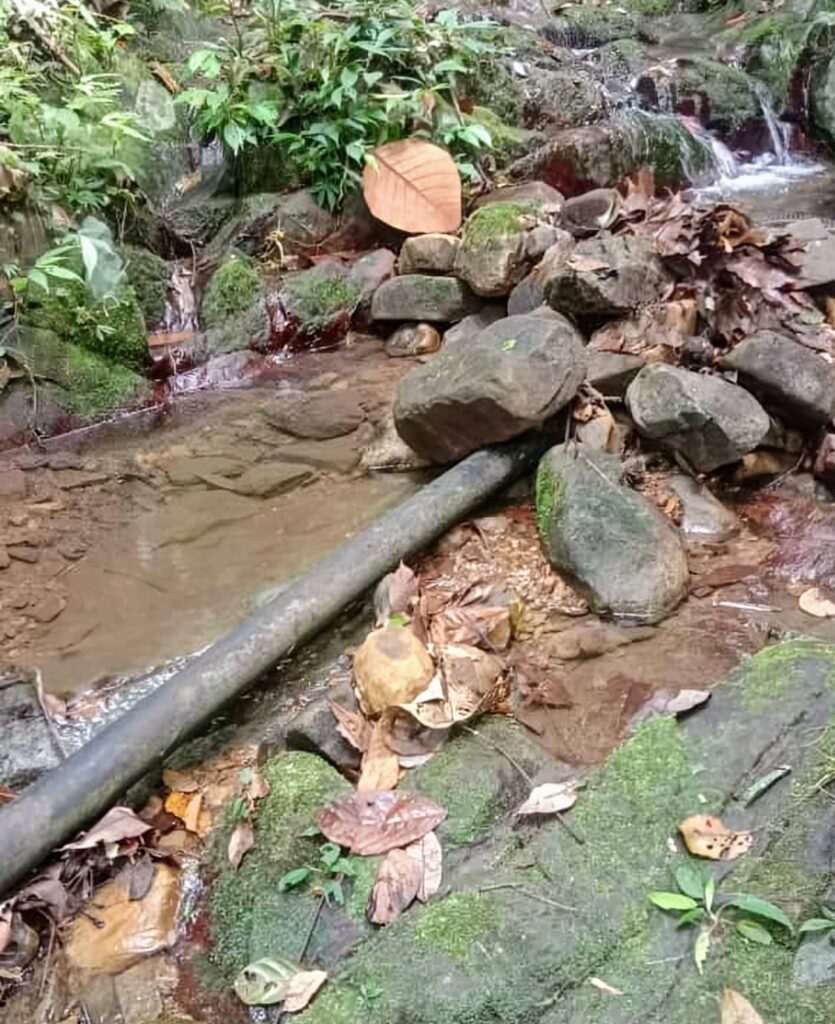Lewis… Residents are suffering, no rain means no water.

Sungai Kiapad, the main water sources of the Kionsom Water Gravity System is drying.
KOTA KINABALU : – Thousands of Inanam residents are not exempt from being affected by the problem of water shortage which has worsened during the current dry season.
Parti Warisan Inanam activist Lewis Wong said that residents of Bukit Saazo in Minintod, for example, are among the villages worst affected by water shortage.
“More than 100 residents living there have been hoping for rainwater for a long time. No rainwater means no water. The water supply from the government is not enough to reach them.
“With the news of the possible drought now, residents there will continue to suffer if no efforts are made immediately.
“Several high-profile leaders living there are also not receiving water but they have better financial resources and receive water from underground which is then stored in special tanks,” he said.
He was sad because of Inanam, which is within.Kota Kinabalu City, should not suffer as much from the water shortage problem as residents in other districts.
However, he said, this is no longer surprising because many places in the city are also facing the same problem and the worst one and has become viral in various media is the water crisis at UMS.
According to Lewis, the problem of no water is among three problems in Sabah that require government attention.
The other two problems are the electricity supply and bad roads.
“We call these three problems the ‘triple’ problem and they require urgent attention from the government,” he said, adding that this task is challenging but can be done if the government really wants to solve it.
Lewis said that the issue of no water in Inanam requires government commitment, community involvement and efficient project management as the keys to ensuring that water supply is always available.
“Inanam is a developing district because it is close to the city of Kota Kinabalu. The district is facing this issue due to the increasing demand for this most important resource.
“This increasing population is opening up new settlements such as houses, shops and other infrastructure developments. “The population growth and expansion of this city are affecting the existing water infrastructure,” he told talantang.com.
Therefore, to solve this crisis, he suggested focusing on two development projects, namely upgrading the existing gravity water system and accelerating the construction of the water plant in Telibong.
Lewis said the existing gravity water system in Inanam has been in use for a long time.
Many villages depend on gravity water from the catchment area but the system is outdated causing many leaking pipes, low pressure and inconsistent supply.
The problem of over-reliance on rain-fed sources is inefficient and outdated because when drought occurs it reduces the availability of water in the catchment area.
However, Lewis said the gravity system is still relevant to villagers, especially those living in highland areas.
This system needs to be upgraded by restoring the catchment system, repairing and upgrading dams, pipelines and storage tanks to minimize losses.
“A new water pumping and distribution system needs to be made. Installing booster pumps and replacing modern pipeline equipment to ensure consistent pressure.
“Alternative water sources include exploring groundwater wells or small-scale treatment plants for remote areas. Residents can also manage water in a community-based manner by training local communities to maintain and monitor the water system sustainably,” he explained.
The second way is to expedite the construction of the water treatment plant in Telibong Tamparuli.
This is a more sustainable solution.
According to JAN, if completed, the Telibong plant could solve the water supply problem in the city and its surroundings, but the promise to complete the project by 2021 has not been fulfilled.
Lewis urged that the construction of the plant be expedited and suggested that state or federal funds be channeled on time and that only efficient contractors with good performance be hired.
Coordination between parties involved in this project also needs to be improved, such as land acquisition and logistical delays between agencies, namely the Sabah Water Department, contractors and local authorities.
The current short-term solution is to provide temporary water tanks or mobile treatment units while waiting for the plant to be completed.
He refused to point fingers at specific parties, but believed the key to ensuring water supply in Inanam and other places in Sabah was commitment from the government, the community and efficient project management.